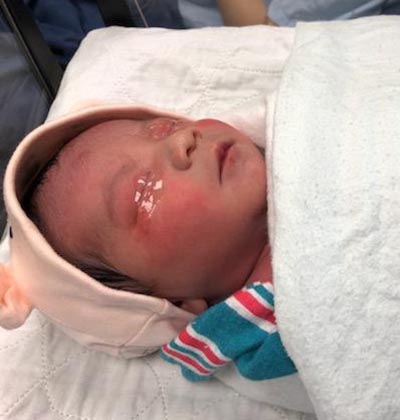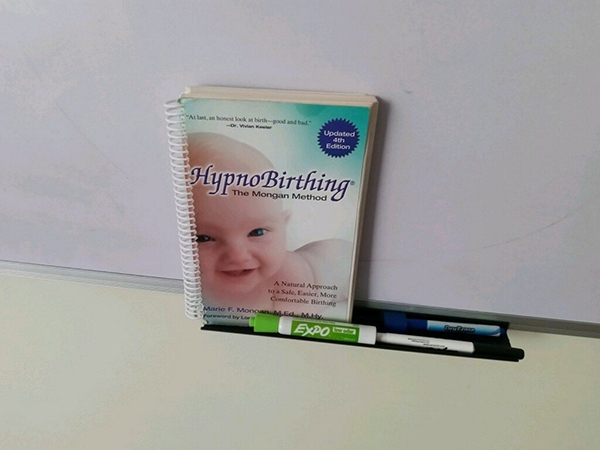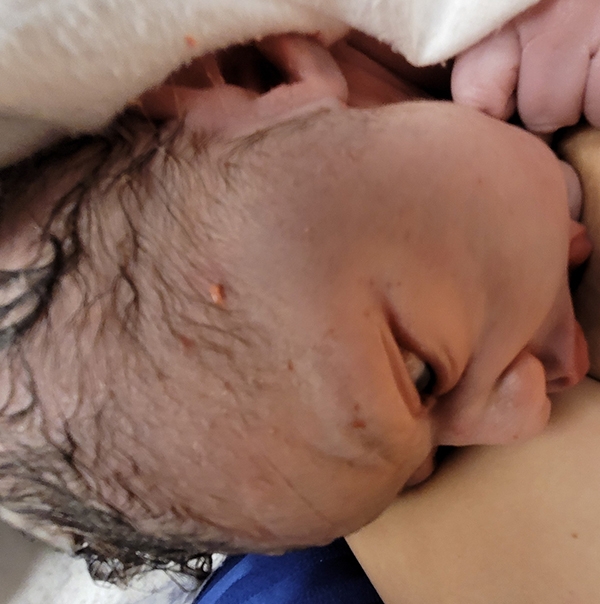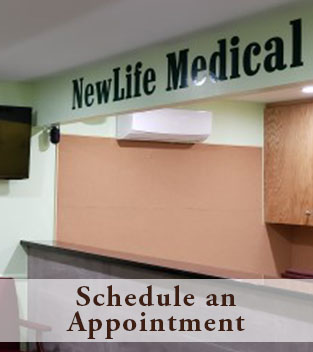Ask us about our cord blood banking services from our approved cord blood companies.
What is cord blood, and why should I bank it?
Cord blood is, quite simply, the blood that remains in your baby’s umbilical cord after delivery. This blood contains stem cells, which have the unique ability to regenerate into brain, muscle, heart, and other types of cells. Properly preserved, they can be used later to repair or replace diseased or damaged cells, and are highly valued in the treatment of approximately 80 different diseases.
Cord blood banking is especially important for families that have used either an egg donor or sperm donor, as well as adoptive parents, because a genetic link to the child is not present in these cases. Minority groups and families of mixed ethnicity should strongly consider cord blood banking, as they generally experience difficulty in finding a suitable match through other stem cell sources suck as bone marrow.
Based on actual transplant rates from 2001-2003, the likelihood that a child or family member will require a transplant by age 70 are in 217, By using your child’s own stem cells, there is no risk of rejection or injury to the immune system. Parents and siblings of the child may benefit from banked cord blood too, as long as a close genetic match can be established.
How’s is cord blood collected?
Cord blood collection occurs at the time of delivery. The process is painless and non-invasive for both mother and baby, Once collected, the cells are stored for future use at a temperature of -196 Celsius.
How is cord blood used?
Currently, stem cells from cord blood are used in transplant therapy to restore the body’s immune and blood making systems. Because transplant therapy uses chemotherapy and/or radiation to destroy diseased cells, healthy cells must be introduced to the body. This engraftment causes the body to regenerate new, healthy blood cells which in turn restores the immune system.
The benefits of cord blood banking
Over the past two decades, cord blood has been approved by the U.S. Food and Drug Administration (FDA) for the treatment of over 80 diseases, with more therapies added every year. Private banking protects your family from these dangerous conditions, while a public donation can help researchers find new treatments, or aid a family with little or no medical options.
Cord blood stem cells are too valuable to discard
With over 1 million cord blood units in private storage, and continued support from the medical community and government, many researchers believe umbilical cord cells will become a standard treatment in the next decade. With dozens of clinical trials currently testing future treatment possibilities for cord blood, there are more reasons to bank your baby’s stem cells than ever before.
Diseases treated with cord blood
Cord blood HSCs have been used in treatment for over 20 years, with over 35,000 transplants completed worldwide. Since the first successful cord blood treatment in 1988, doctors have used umbilical cord cells as a therapy for dozens of different illnesses. Cord blood HSCs now treat over 80 different conditions — in the past 8 years, the list of diseases treated with cord blood has doubled.
Now, almost half of pediatric treatments around the world involve cord blood stem cells.
Cord blood is often given with more traditional types of treatment like chemotherapy. In cancer patients, doctors use heavy amounts of chemotherapy to eliminate diseased cells. Unfortunately, this leaves patients with a dangerously low cell count. A cord blood transplant is then given, which boosts the patient’s cell count and provides them with healthy HSCs.
HSCs can be used as a treatment for:
- Blood cancers like leukemia and lymphoma
- Immune system disorders like aplastic anemia
- Metabolic conditions like Hurler syndrome and Krabbe disease
Once the cells are injected into a patient’s system, they move through the bloodstream to damaged areas like the brain, heart, or other vital organs. After they arrive, the cells adapt into the type of cell most needed by the body, and begin multiplying. This increases the patient’s healthy blood cell count and improves their recovery time.
Understanding Stem Cells
Stem cells are cells that can multiply an infinite amount of times. This means a single stem cell can create millions of similar cells, which can then become specialized. These specialized cells, which live inside our bodies, can become different cell types throughout their lifetime, depending on what our bodies need.
Why stem cells are different from other types of cells:
- They can multiply through a process called cell division. This allows stem cells to increase in number and regenerate, even after long periods of inactivity. Cell division happens when a cell splits into two parts. Over time, these cells continue to break apart, creating massive amounts of stem cells.
- Stem cells can change to assist specific organs and regenerate damaged tissue. Vital organs like the brain may need additional cells to repair themselves. In this case, a group of stem cells could change into a specialized brain cell that would help replace damaged tissue, and can even restore lost brain functions.
Our understanding of stem cells has improved over the past several decades, but researchers are still discovering new ways to collect and use stem cells. Scientists originally believed they could only find enough stem cells for a transplant in bone marrow or an embryo. However, the list of patients with successful cord blood transplants continues to grow, leading many doctors to believe that cord blood is just as effective as bone marrow, with fewer risks and a less invasive collection process.
Cord blood stem cells
The two main types of cells found in the umbilical cord are hematopoietic cells and mesenchymal cells. Both of these cells are considered multi-potent, which means they may develop into different cell types over the course of their life.
Hematopoietic stem cells (HSCs) can divide and create a population of different blood cells. The 3 major types of cells created each affect the body in different ways:
- Red blood cells — the most common type of blood cell, red blood cells move oxygen to organs and tissue through the circulatory system
- White blood cells — these cells work with the immune system and protect against disease and infection
- Platelets — Platelet cells stop bleeding by clumping together during blood loss
Mesenchymal stem cells, also called bone marrow stromal stem cells, are typically found in bone marrow. Scientists can also find this type of cell in cord blood. When transplanted into the body, mesenchymal cells can create:
- Bone cells — these cells can improve bone structure and reduce corrosion to damaged and brittle bones
- Cartilage cells — like bone cells, cartilage cells repair damage and reduce further wear on cartilage
- Fat cells — Adipocytes, or fat cells, store energy as fat, which can be used at a later time if needed by the body
Mesenchymal cells are typically found in the actual cord material, rather than in the actual blood. Many banks are now offering both cord blood and cord tissue banking to give patients access to multiple stem cell types. After birth, medical staff will remove blood and cut a large piece of the umbilical cord, which is stored along with cord blood in a facility.
You can learn more about the benefits of cord tissue banking, including potential treatments to spinal cord and cartilage damage, by visiting our cord tissue page.
Stem cell sources
Scientists have found stem cells all over the body, usually in small amounts. The bloodstream, organs, tissues, and virtually any major part of the body may contain stem cells. However, removing stem cells from most organs or tissues is often too painful and doesn’t give doctors enough cells for a successful transplant.
While bone marrow is the most popular choice for stem cells, and has been around the longest, doctors typically have 3 sources to choose from:
- Bone marrow
- Bloodstream (also called peripheral blood)
- Umbilical cord (cord blood)
Bone marrow
Bone marrow is the original source of HSCs. Doctors have been removing stem cells from bone marrow for over 40 years, and have used these cells in thousands of successful transplants. The bone marrow process is a surgical procedure done in a hospital, and requires an experienced doctor. The procedure requires several steps, all done while the patient is asleep:
- Doctors use anesthesia to put the patient to sleep, and medical staff move the patient into an operating room
- The team then inserts a syringe into one of the patient’s bones, typically a hipbone
- The syringe pulls out bone marrow cells, but also stromal and blood cells and even small bone fragments
The team must also filter out the stem cells, which takes place after surgery. Patients that go through bone marrow donation will have to stay at a hospital and recover for up to 7 days. The average time for a total recovery after bone marrow donation is 20 days, including both hospital time and at-home recuperation.
Bloodstream
Doctors can also remove stem cells from the blood stream, often called a peripheral blood transplant. This is quickly becoming a preferred method of stem cell removal, and doesn’t require an invasive surgery or cause the intense pain of a bone marrow removal.
While scientists have known about stem cells circulating in the bloodstream for decades, there usually aren’t enough available for a successful transplant. Researchers have started using cytokines, molecules that stimulate cells and move them into the bloodstream. The peripheral blood collection process takes a few days and works in several steps:
- Doctors will inject a cytokine, such as a granulocte-colony stimulating factor (GCSF), into the patient several days before the transplant
- The body reacts and starts pushing stem cells into the bloodstream
- The doctor will then use an intravenous tube to collect stem cells, and a filter system to keep valuable blood cells circulating back through the body
Many white blood cells used in a bone marrow transplant are actually collected from the bloodstream, because this method is easier on the donor and collects almost twice as many HSCs as a traditional bone marrow procedure.
Comparing cord blood to other stem cell sources
There are benefits and drawbacks with each type of stem cell source. While cord blood banking is the least invasive procedure, and provides the most adaptable HSCs, there isn’t as much research on umbilical cord cells. Research is positive, but doctors still have a lot to learn about treatment and storage of cord blood stem cells.
Bone marrow is the most traditional, and widely-used, source of stem cells. Many doctors are very experienced with bone marrow. However, these cells are much older than those found in cord blood, and may already be diseased. Bone marrow transplants also require a painful surgery that can take weeks to recover from.
Peripheral blood collection is less invasive than a bone marrow transplant, and doctors can retrieve almost twice as many stem cells. However, the chance for graft-versus-host disease, where the transplanted cells attack the patient’s body, is much higher than both cord blood and bone marrow.
Graft-versus-host disease can happen in any stem cell transplant, especially with adult stem cells from peripheral blood and bone marrow. Because these cells have already adjusted to their host’s system, they don’t always adapt to different environments.
Comparing the 3 major sources of stem cells:Bone marrow — the most established procedure, but requires surgery and has a small chance of causing graft-versus-host disease
- Bloodstream — less invasive than a bone marrow transplant and provides the highest amount of stem cells, but has the greatest chance of graft-versus-host disease
- Cord blood — provides the most adaptable cells and is the least invasive procedure, but there isn’t as much research and birth is the only chance to collect cells
If you are interested in learning more about the benefits and drawbacks of bone marrow, peripheral blood, and cord blood, you can read more on our stem cells page.
Ongoing research is promising
Cord blood has been used in over 25,000 transplants worldwide. Thanks to the advances in research and clinical trials, the list of diseases for which transplant therapy may be an effective option continues to expand.
- These include:
- Alzheimer’s Disease
- Heart Disease
- Muscular Dystrophy
- Liver Disease
- Osteoporosis
- Burn Injuries
- Stroke
- Lou Gehrig’s Disease
- Spinal Cord Injuries
- Diabetes
- Multiple Sclerosis
Myth: Taking cord blood away from the baby removes valuable stem cells.
During cord blood removal, the umbilical cord is cut and clamped just like in a normal birthing procedure. The only difference is that instead of discarding the umbilical cord after birth, medical staff will take the cord to another room and remove leftover blood. The child will not lose any stem cells.
Myth: Removing cord blood is painful for the mother and her baby.
The mother and her child will not experience any pain during cord blood removal as it is no different to them than a normal birth experience. The umbilical cord is cut and clamped, just like normal, and then taken into another room. The mother and her child will experience no difference during or after birth.
Myth: Cord blood cells are the same as embryonic stem cells.
HSCs from cord blood are taken safely from the umbilical cord, causing no harm to the mother or her child. These cells, and cord blood removal, are completely different than an embryonic stem cell procedure, which usually destroys the fetus and aborts the unborn child. Cord blood does not place your child in any danger. After birth and the removal of the umbilical cord, you will have a happy, healthy baby to take home with you.
Myth: Delayed cord clamping isn’t possible during cord blood removal.
Parents may choose to delay cutting their child’s umbilical cord, which allows blood to drain back into the baby and reduces the risk for iron deficiency. Cord blood removal is still possible if delayed cord clamping lasts less than 5 minutes. At this time, the umbilical cord should still have more than 25% of blood left — this is the minimum amount needed for storage.
Removing umbilical cord HSCs after birth is completely safe. The procedure doesn’t cause any harm to the mother or her baby, but could provide valuable stem cells to a patient that needs them. Cells taken from an umbilical cord are being used in treatments for dozens of dangerous conditions.











